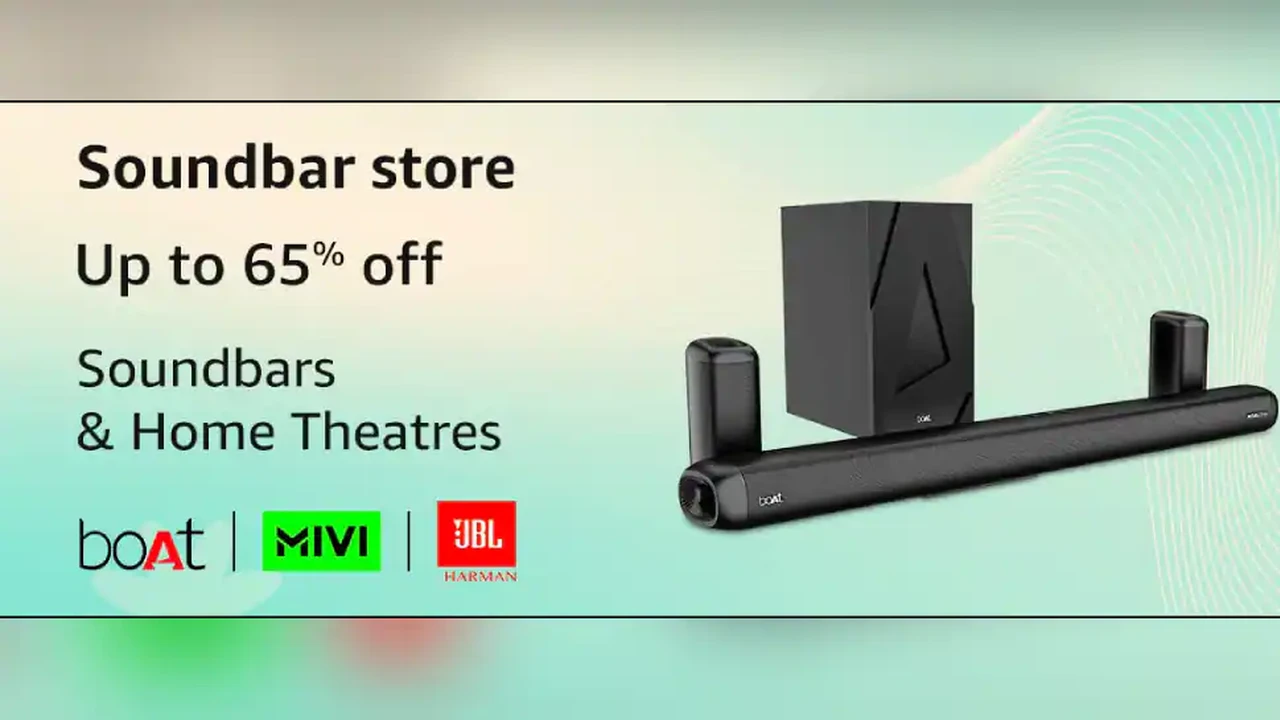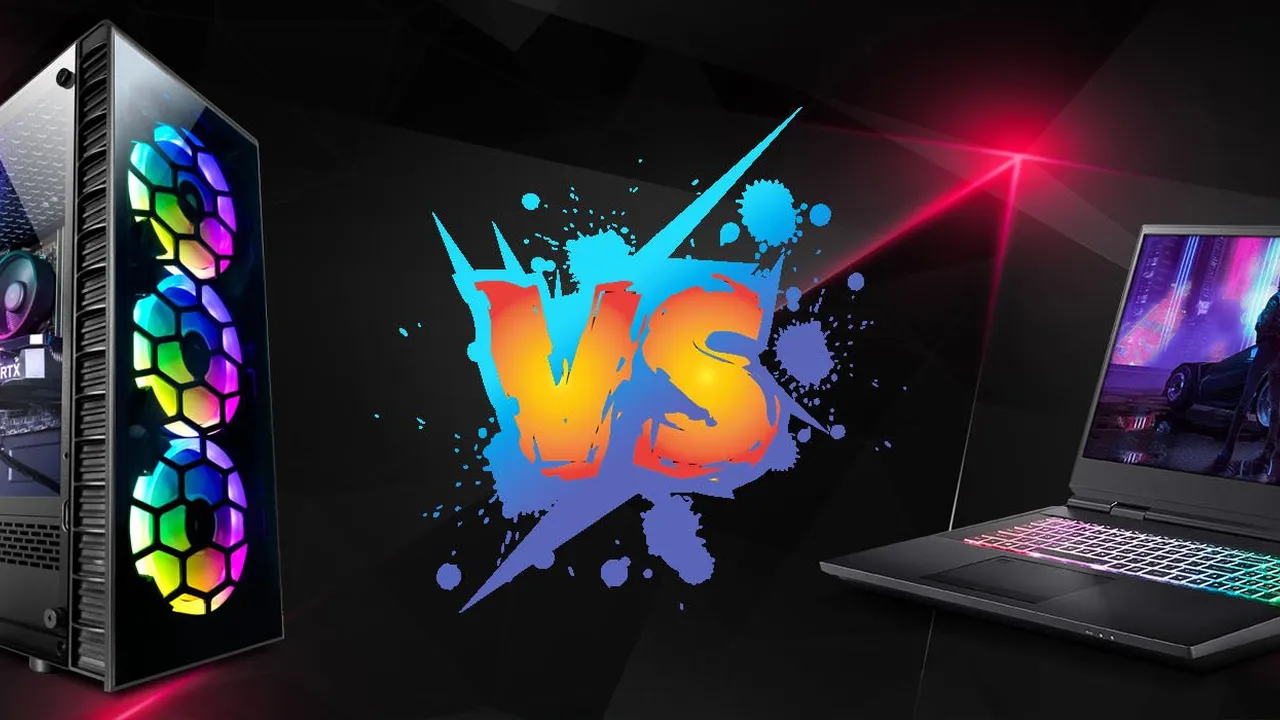
Best Soundbars for Home Theater Audio
Elevating Your Entertainment Experience with Soundbars
In today's home entertainment landscape, a stunning visual experience often takes center stage. We invest in large, high-definition televisions, but what about the audio? The truth is, even the most expensive TVs often come with built-in speakers that leave much to be desired. This is where soundbars come in. A soundbar is a compact, all-in-one audio system designed to significantly enhance your TV's sound, delivering clearer dialogue, richer bass, and a more immersive listening experience. Whether you're watching movies, binging your favorite series, cheering on your sports team, or gaming, a good soundbar can transform your living room into a true home theater.
Why Choose a Soundbar Over TV Speakers or Full Surround Sound Systems?
While TV speakers are convenient, they typically lack the power, clarity, and bass response needed for truly engaging audio. Full surround sound systems, with their multiple speakers and complex wiring, offer the ultimate immersive experience but can be expensive, require significant space, and are often challenging to set up. Soundbars strike a perfect balance. They are:
- Space-Saving: Their sleek, elongated design fits neatly under your TV, eliminating the need for multiple bulky speakers.
- Easy to Set Up: Most soundbars connect to your TV with a single cable (HDMI ARC/eARC is preferred), making installation a breeze.
- Cost-Effective: While prices vary, soundbars offer a significant audio upgrade without the hefty price tag of a full home theater system.
- Aesthetic: Their minimalist design blends seamlessly with modern home decor.
- Significantly Better Audio: Even entry-level soundbars provide a noticeable improvement in dialogue clarity, dynamic range, and bass compared to built-in TV speakers.
Key Features to Consider When Buying a Soundbar for Immersive Audio
Choosing the right soundbar can be overwhelming given the vast array of options. Here are the crucial features to consider:
Audio Channels and Surround Sound Technologies
Soundbars are often described by their channel configuration (e.g., 2.0, 3.1, 5.1.2). The first number indicates the number of main audio channels (left, right, center), the second indicates the subwoofer (for bass), and the third (if present) indicates upward-firing speakers for height effects.
- 2.0 Channel: Basic stereo sound, better than TV speakers but no dedicated center channel for dialogue.
- 3.1 Channel: Adds a dedicated center channel for clearer dialogue and a separate subwoofer for bass. This is a great starting point for movie lovers.
- 5.1 Channel: Adds two rear surround speakers (either wired or wireless) for a more enveloping soundstage.
- Dolby Atmos and DTS:X (Object-Based Audio): These advanced technologies create a truly immersive 3D sound experience by adding height effects. Soundbars with upward-firing speakers bounce sound off the ceiling to simulate overhead audio. This is a game-changer for movies and games.
Connectivity Options for Seamless Integration
How your soundbar connects to your TV and other devices is vital:
- HDMI ARC/eARC: This is the preferred connection. HDMI ARC (Audio Return Channel) allows audio to travel both ways through a single HDMI cable, simplifying setup and enabling your TV remote to control the soundbar's volume. HDMI eARC (enhanced Audio Return Channel) is an upgraded version that supports higher bandwidth and uncompressed audio formats like Dolby Atmos and DTS:X.
- Optical Digital Audio: A common alternative if your TV doesn't have HDMI ARC. It carries digital audio but doesn't support advanced formats like Dolby Atmos.
- Bluetooth: For wirelessly streaming music from your smartphone, tablet, or computer.
- Wi-Fi/Ethernet: For streaming music from network services (Spotify Connect, Apple AirPlay 2, Chromecast built-in) and for firmware updates.
- USB: For playing audio files directly from a USB drive.
- Auxiliary (3.5mm): For connecting older devices.
Subwoofer Integration and Bass Performance
A dedicated subwoofer is crucial for impactful bass. Most soundbars come with a wireless subwoofer, which offers placement flexibility. Consider the size of the subwoofer and its power output for the best bass response in your room.
Sound Modes and Customization
Look for soundbars with various sound modes (e.g., Movie, Music, Dialogue Enhance, Night Mode) to optimize audio for different content. Some soundbars also offer EQ settings or app control for fine-tuning the sound to your preference.
Voice Assistant Integration and Smart Features
Many modern soundbars integrate with voice assistants like Amazon Alexa or Google Assistant, allowing you to control the soundbar, play music, and even manage smart home devices using voice commands.
Design and Size Considerations
Ensure the soundbar's length is appropriate for your TV's width. Also, check its height to ensure it doesn't block your TV's IR receiver or screen if placed directly in front of it. Wall-mounting options are also available for a cleaner look.
Top Soundbar Recommendations for Various Budgets and Use Cases
Let's dive into some specific product recommendations, covering different price points and features to help you find the perfect soundbar for your home.
Entry-Level Excellence: Affordable Soundbars for Enhanced TV Audio
1. Vizio V-Series 2.1 Home Theater Sound Bar (V21t-J8)
- Price Range: $150 - $200 USD
- Key Features: 2.1 channels with a wireless subwoofer, DTS Virtual:X for virtual surround sound, Bluetooth, HDMI ARC, Optical.
- Use Case: Perfect for small to medium-sized rooms where you want a significant upgrade over TV speakers without breaking the bank. Great for movies, TV shows, and casual music listening.
- Why it's Great: Vizio consistently delivers excellent value. This soundbar offers surprisingly robust bass from its wireless subwoofer and DTS Virtual:X creates a wider soundstage than you'd expect from a 2.1 system. Dialogue is clear, and setup is incredibly simple.
- Considerations: Lacks true Dolby Atmos/DTS:X. Best suited for those on a tight budget who prioritize clear dialogue and impactful bass.
2. Roku Streambar
- Price Range: $100 - $130 USD
- Key Features: 2.0 channels, built-in 4K Roku streaming player, Bluetooth, HDMI ARC.
- Use Case: Ideal for secondary TVs, bedrooms, or anyone looking to upgrade both their audio and streaming capabilities in one compact device.
- Why it's Great: It's a soundbar and a Roku streaming stick combined! This makes it incredibly convenient and clutter-free. The audio is a definite step up from TV speakers, and the Roku interface is user-friendly.
- Considerations: No dedicated subwoofer (though you can add a Roku Wireless Subwoofer separately). Not designed for immersive surround sound, but excellent for convenience and basic audio improvement.
Mid-Range Marvels: Balancing Performance and Value in Soundbar Technology
1. Samsung HW-Q700C
- Price Range: $400 - $600 USD
- Key Features: 3.1.2 channels with wireless subwoofer, true Dolby Atmos and DTS:X, Q-Symphony (for compatible Samsung TVs), HDMI eARC, Bluetooth, Wi-Fi, Alexa built-in.
- Use Case: Excellent for medium to large living rooms where you want a genuine immersive experience with overhead effects for movies and games.
- Why it's Great: This soundbar offers a fantastic balance of features and performance. The dedicated center channel ensures crystal-clear dialogue, and the upward-firing speakers deliver convincing Dolby Atmos effects. Q-Symphony integration with Samsung TVs further enhances the soundstage.
- Considerations: While it offers great Atmos, it's still a soundbar, so don't expect the same separation as a full 5.1.2 system. Rear speakers are sold separately if you want true surround.
2. Sonos Beam (Gen 2)
- Price Range: $450 - $500 USD
- Key Features: Compact design, virtual Dolby Atmos, HDMI eARC, Wi-Fi, Apple AirPlay 2, Google Assistant & Amazon Alexa built-in, part of the Sonos ecosystem.
- Use Case: Perfect for smaller to medium-sized rooms, apartments, or anyone already invested in the Sonos multi-room audio ecosystem. Great for music and TV.
- Why it's Great: Sonos is renowned for its multi-room audio capabilities and user-friendly app. The Beam Gen 2 delivers surprisingly rich and detailed sound for its size, with impressive virtual Atmos effects. Its integration with voice assistants and AirPlay 2 makes it incredibly versatile.
- Considerations: No dedicated subwoofer included (Sonos Sub Mini or Sub Gen 3 sold separately, which adds significant cost). Virtual Atmos is good, but not as impactful as true upward-firing speakers.
Premium Powerhouses: High-End Soundbars for the Ultimate Home Theater
1. LG S95QR
- Price Range: $1000 - $1500 USD
- Key Features: 9.1.5 channels with wireless subwoofer and wireless rear speakers (with upward-firing drivers), true Dolby Atmos and DTS:X, Meridian Audio technology, HDMI eARC, Bluetooth, Wi-Fi, Google Assistant & Amazon Alexa built-in, AI Room Calibration.
- Use Case: For large living rooms and dedicated home theater spaces where you want a truly immersive, cinematic audio experience without the complexity of a custom-installed system.
- Why it's Great: This is a beast of a soundbar system. With dedicated rear speakers that also have upward-firing drivers, it creates an incredibly convincing and expansive Dolby Atmos/DTS:X soundstage. Meridian Audio tuning ensures excellent clarity and detail. AI Room Calibration optimizes the sound for your specific room.
- Considerations: It's a significant investment. While wireless, the rear speakers still require power outlets.
2. Samsung HW-Q990C
- Price Range: $1200 - $1600 USD
- Key Features: 11.1.4 channels with wireless subwoofer and wireless rear speakers (with upward-firing drivers), true Dolby Atmos and DTS:X, Q-Symphony, SpaceFit Sound Pro, HDMI eARC, Bluetooth, Wi-Fi, Alexa built-in.
- Use Case: Similar to the LG S95QR, this is for enthusiasts seeking the absolute best soundbar experience for large rooms and cinematic immersion.
- Why it's Great: Samsung's flagship soundbar offers an unparalleled channel count for a soundbar system, delivering incredibly precise and enveloping surround sound with powerful Atmos effects. SpaceFit Sound Pro automatically calibrates the sound to your room. The bass is deep and impactful.
- Considerations: Premium price point. Requires space for the main bar, subwoofer, and two rear speakers.
3. Sony HT-A7000 with SW5 Subwoofer and RS3S Rear Speakers
- Price Range: Soundbar: $1000 - $1300 USD; SW5 Subwoofer: $700 - $800 USD; RS3S Rear Speakers: $350 - $400 USD (Total: ~$2000 - $2500 USD)
- Key Features: 7.1.2 channels (soundbar only), true Dolby Atmos and DTS:X, 360 Spatial Sound Mapping (with optional rear speakers), HDMI eARC, Bluetooth, Wi-Fi, Chromecast built-in, Spotify Connect, Apple AirPlay 2, Sound Field Optimization.
- Use Case: For those who want a modular, high-performance system that can be expanded over time. Excellent for both movies and high-fidelity music listening.
- Why it's Great: The HT-A7000 soundbar itself is a powerhouse, delivering excellent sound quality and impressive virtual surround. When paired with the optional SW5 subwoofer and RS3S rear speakers, Sony's 360 Spatial Sound Mapping technology creates an incredibly convincing and wide soundstage, making it feel like you have speakers all around you, even where there aren't any physical ones. It's also fantastic for music.
- Considerations: The full system is quite expensive. The soundbar alone is good, but the true magic happens with the optional components, which significantly increase the total cost.
Setting Up Your Soundbar for Optimal Performance and Audio Quality
Once you've chosen your soundbar, proper setup is key to maximizing its performance:
Physical Placement and Room Acoustics
- Under the TV: Ideally, place the soundbar directly below your TV, centered. Ensure it doesn't block the TV's IR sensor.
- Wall Mounting: Many soundbars can be wall-mounted for a cleaner look. Ensure it's level with the bottom of your TV.
- Subwoofer Placement: Experiment with subwoofer placement. While bass is less directional, placing it in a corner can sometimes boost bass, but it can also lead to muddiness. Try different spots to find the sweet spot for your room.
- Room Size: Consider your room size. Larger rooms may benefit from more powerful soundbars or those with dedicated rear speakers.
- Reflections: Hard surfaces (bare walls, glass) can cause reflections. Soft furnishings (curtains, rugs, couches) can help absorb sound and improve clarity.
Connecting Your Soundbar to Your Television and Devices
- HDMI ARC/eARC First: Always prioritize connecting via HDMI ARC or eARC if your TV supports it. Use a high-quality HDMI cable. Connect the soundbar's HDMI ARC/eARC output to your TV's HDMI ARC/eARC input.
- Optical as Backup: If HDMI ARC isn't available, use an optical digital audio cable.
- Bluetooth Pairing: For music streaming, pair your mobile device via Bluetooth.
- Wi-Fi Setup: For smart features and streaming services, connect your soundbar to your home Wi-Fi network via its companion app.
Calibrating Your Soundbar for the Best Sound Experience
- Room Calibration: Many higher-end soundbars offer automatic room calibration (e.g., Samsung's SpaceFit Sound Pro, LG's AI Room Calibration, Sony's Sound Field Optimization). Run this process to optimize the sound for your specific room's acoustics.
- Manual Adjustments: If no auto-calibration, use the soundbar's remote or app to adjust bass, treble, and individual channel levels (if available) to your preference.
- Dialogue Enhancement: If dialogue is hard to hear, look for a 'Dialogue Enhance' or 'Clear Voice' mode.
- Sound Modes: Experiment with different sound modes (Movie, Music, Game, Standard) to find what sounds best for the content you're watching.
Future Trends in Soundbar Technology and Home Audio
The soundbar market is constantly evolving, with exciting innovations on the horizon:
Deeper Integration with Smart Home Ecosystems
Expect soundbars to become even more central to your smart home, with enhanced voice assistant capabilities, seamless integration with smart lighting, and even more sophisticated multi-room audio features.
Advanced Spatial Audio and Immersive Sound Formats
While Dolby Atmos and DTS:X are prevalent, new spatial audio technologies are emerging, promising even more realistic and enveloping soundscapes, potentially moving beyond the need for physical upward-firing speakers through advanced processing.
Sustainable Manufacturing and Eco-Friendly Materials
As consumer awareness grows, manufacturers are increasingly focusing on sustainable practices, using recycled materials in construction, and designing products for energy efficiency and longevity.
AI-Powered Sound Optimization and Personalization
Artificial intelligence will play a larger role in soundbar technology, offering more intelligent room calibration, adaptive sound profiles based on content, and even personalized audio experiences tailored to individual listeners.
Modular and Expandable Soundbar Systems
The trend towards modular systems, where you can start with a basic soundbar and add components like subwoofers and rear speakers later, will likely continue, offering greater flexibility and upgrade paths for consumers.
Making the Right Choice for Your Home Entertainment Needs
Choosing the best soundbar for your home theater audio depends on your budget, room size, and desired level of immersion. Whether you're looking for a simple upgrade to your TV's built-in speakers or a full-fledged cinematic experience with Dolby Atmos, there's a soundbar out there for you. By considering the key features, exploring the recommended models, and understanding proper setup, you can significantly elevate your home entertainment and enjoy truly immersive sound for all your favorite content. Happy listening!
:max_bytes(150000):strip_icc()/277019-baked-pork-chops-with-cream-of-mushroom-soup-DDMFS-beauty-4x3-BG-7505-5762b731cf30447d9cbbbbbf387beafa.jpg)






